Abstract
The mechanism of poliovirus inactivation by BrCl was determined by exposing poliovirus to various concentrations of BrCl and correlating the loss of virus infectivity with structural changes of the virus. Concentrations of 0.3 to 5 mg of BrCl per liter resulted in 95% to total inactivation of poliovirus. However, the inactivated virus retained structural integrity, as determined by buoyant density measurements of poliovirus labeled with radioactivity. However, at concentrations of 10 to 20 mg of BrCl per liter, total inactivation of poliovirus was associated with the degradation of the structural integrity of the virus. Since infectious ribonucleic acid at similar concentrations could be recovered from untreated poliovirus and poliovirus treated with 0.3 mg of BrCl per liter, it was concluded that BrCl as HOBr or bromamines inactivates poliovirus by reacting with the protein coat of the virus. Moreover, this inactivating reaction does not result in the degradation of the structure of the virion, nor does it affect the biological activity of the internal ribonucleic acid of the virus.
Full text
PDF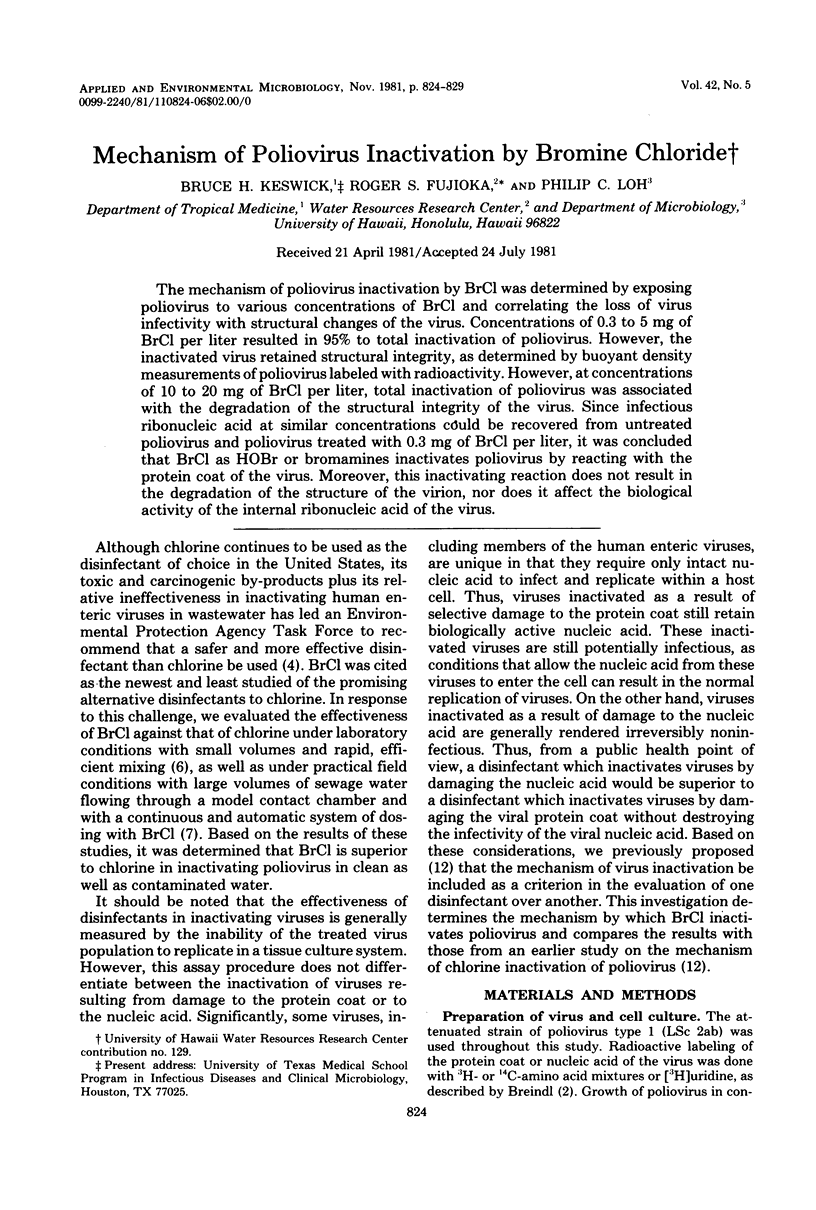
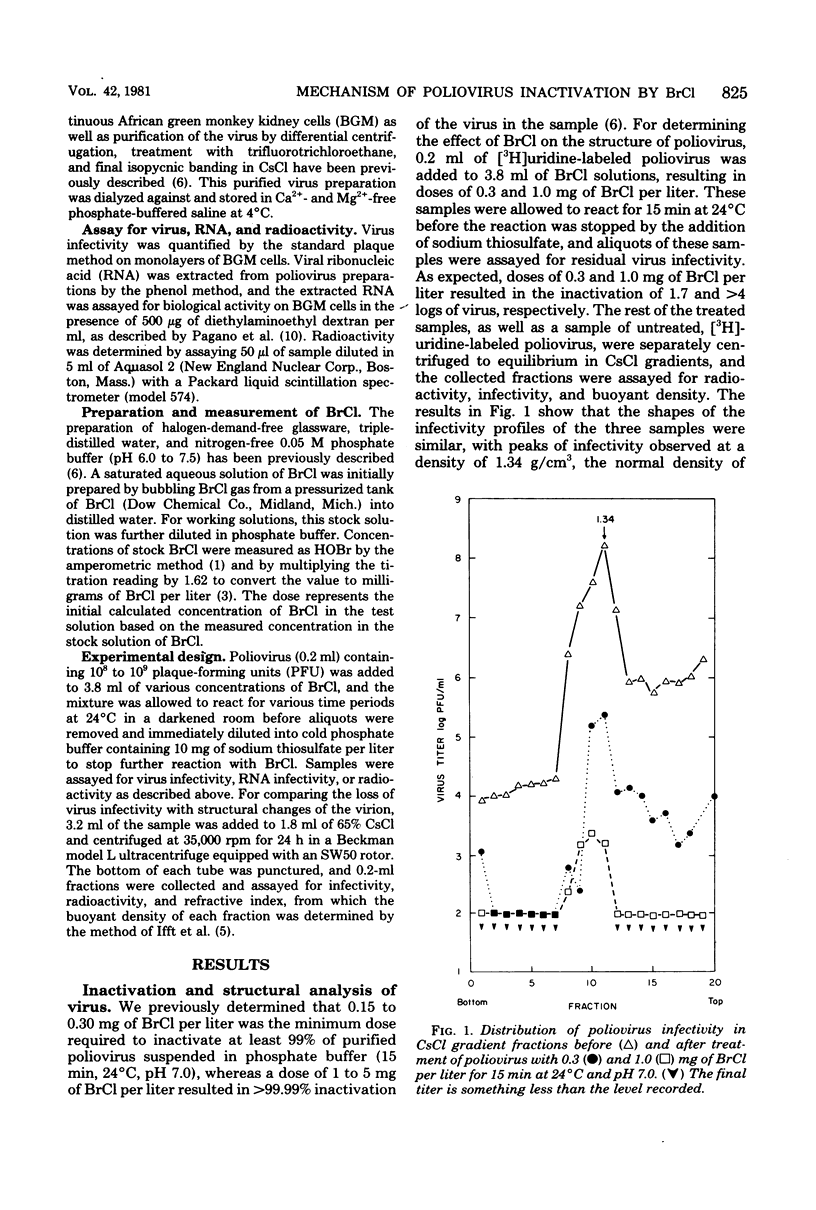
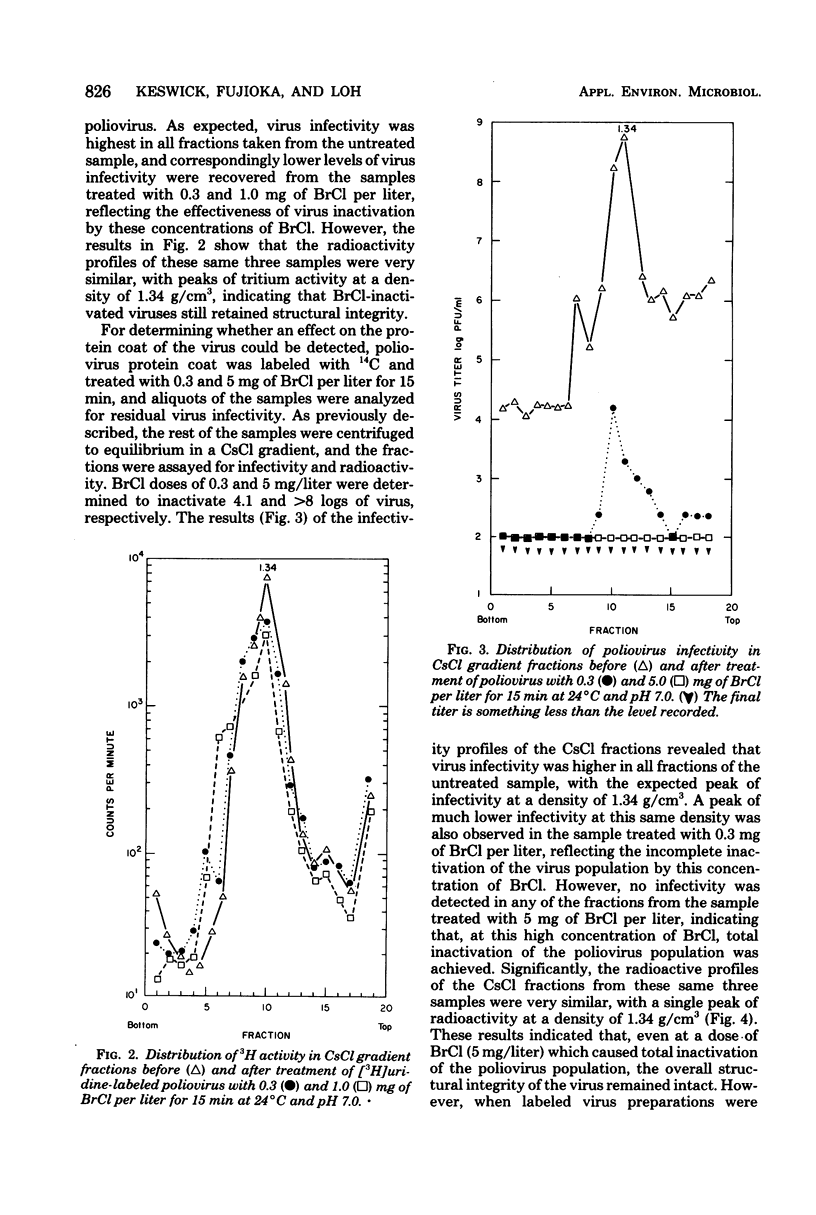
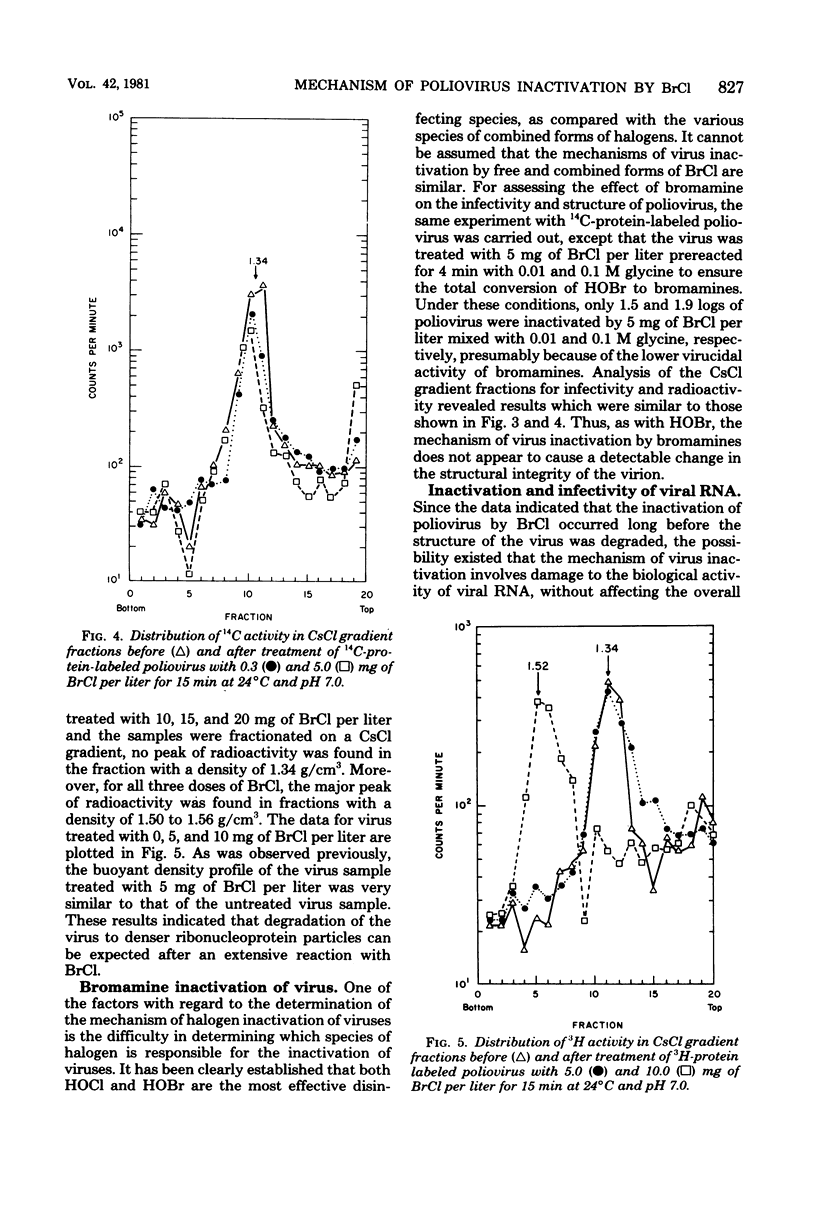
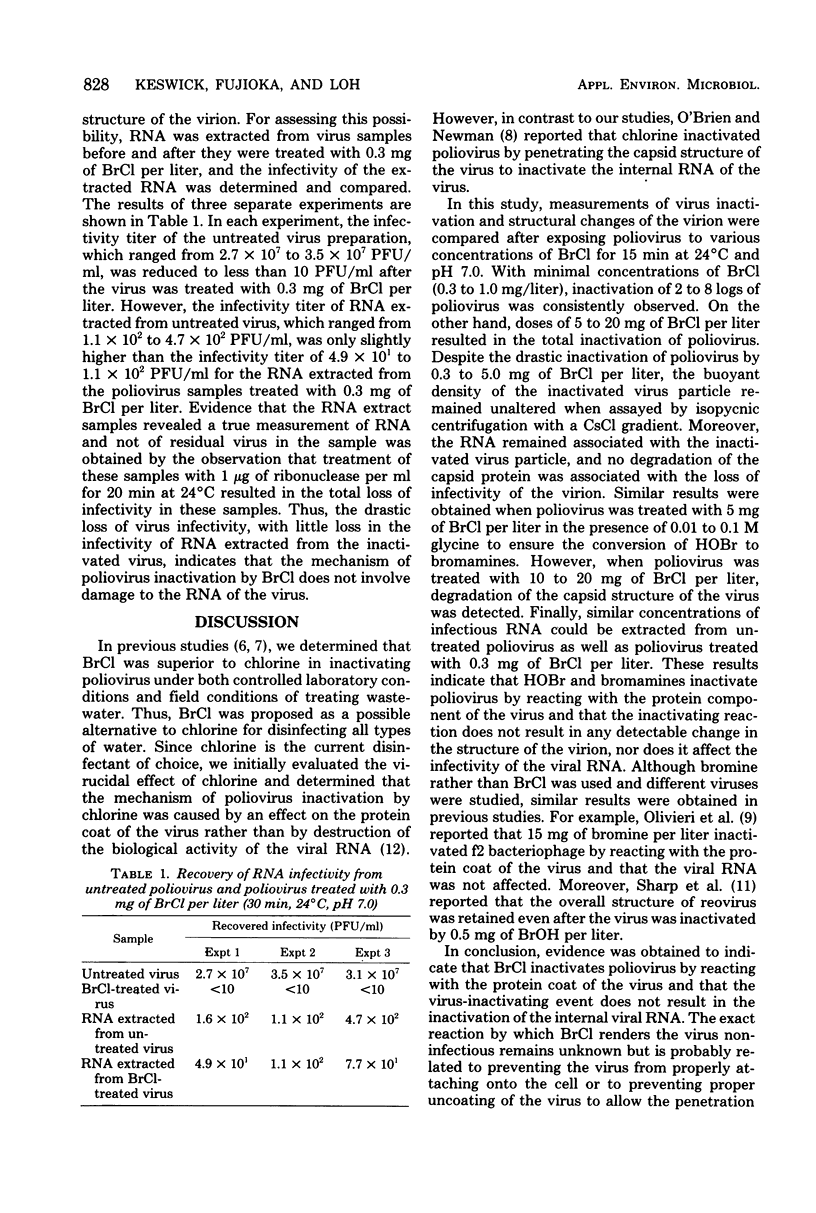
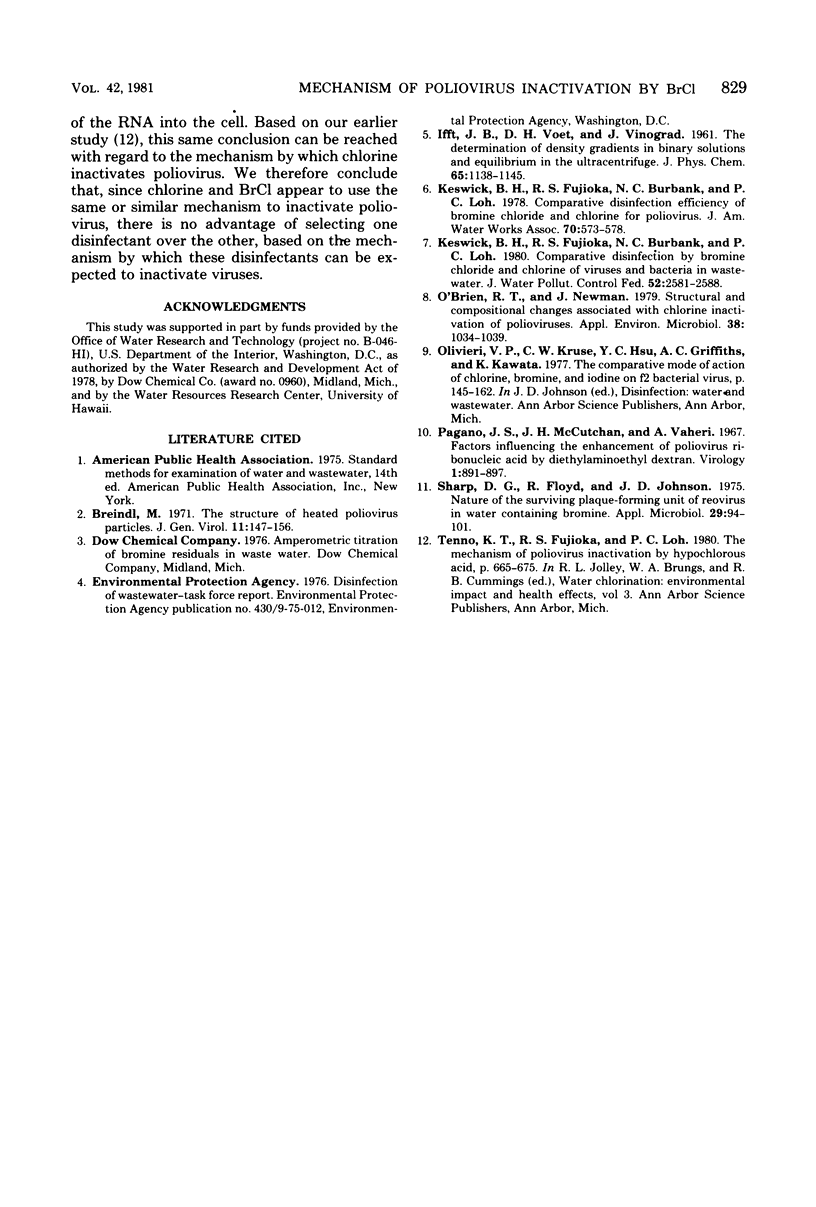
Selected References
These references are in PubMed. This may not be the complete list of references from this article.
- Breindl M. The structure of heated poliovirus particles. J Gen Virol. 1971 Jun;11(3):147–156. doi: 10.1099/0022-1317-11-3-147. [DOI] [PubMed] [Google Scholar]
- O'Brien R. T., Newman J. Structural and compositional changes associated with chlorine inactivation of polioviruses. Appl Environ Microbiol. 1979 Dec;38(6):1034–1039. doi: 10.1128/aem.38.6.1034-1039.1979. [DOI] [PMC free article] [PubMed] [Google Scholar]
- Pagano J. S., McCutchan J. H., Vaheri A. Factors influencing the enhancement of the infectivity of poliovirus ribonucleic acid by diethylaminoethyl-dextran. J Virol. 1967 Oct;1(5):891–897. doi: 10.1128/jvi.1.5.891-897.1967. [DOI] [PMC free article] [PubMed] [Google Scholar]
- Sharp D. G., Floyd R., Johnson J. D. Nature of the surviving plaque-forming unit of reovirus in water containing bromine. Appl Microbiol. 1975 Jan;29(1):94–101. doi: 10.1128/am.29.1.94-101.1975. [DOI] [PMC free article] [PubMed] [Google Scholar]


